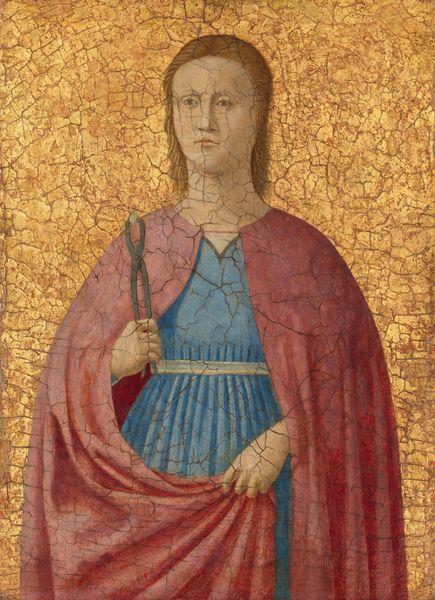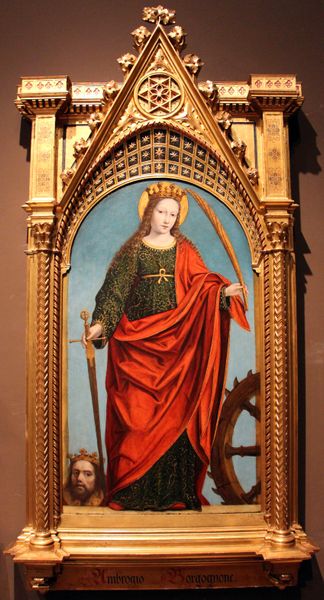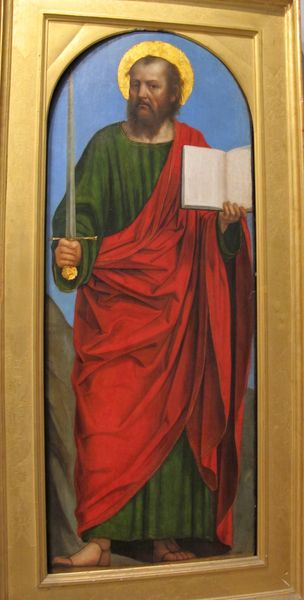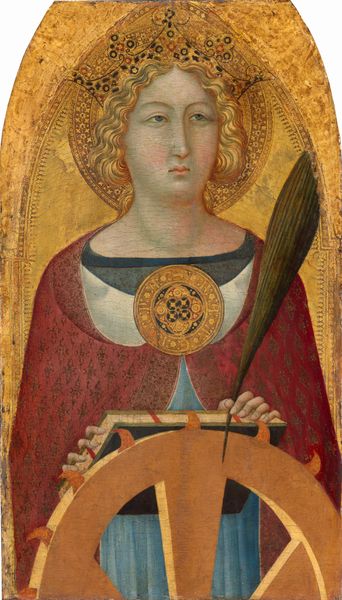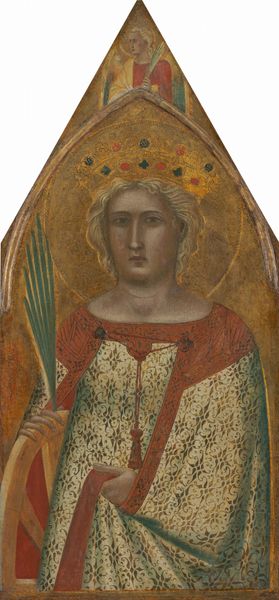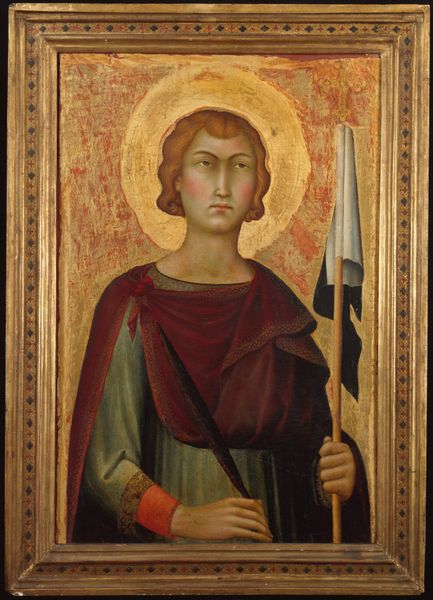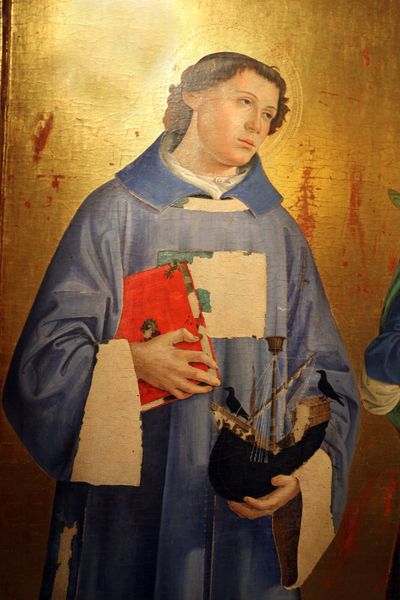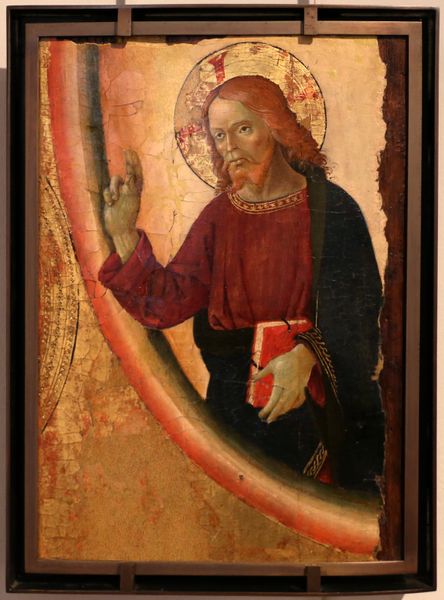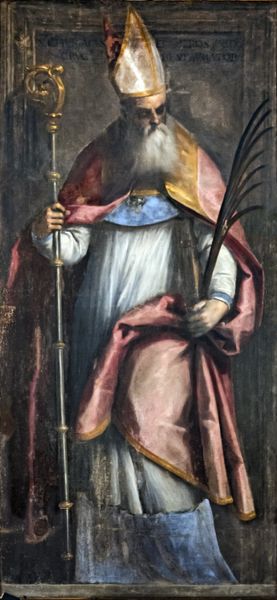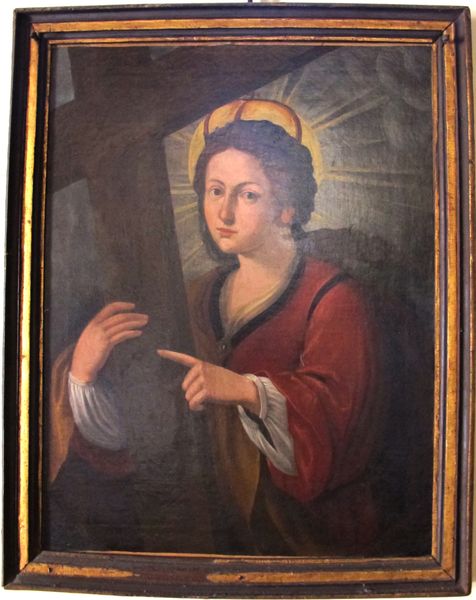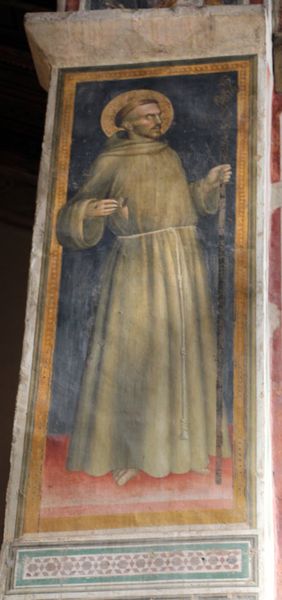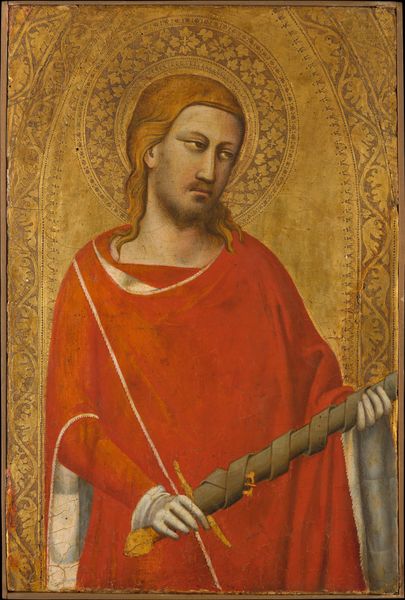
painting, oil-paint, fresco
#
portrait
#
painting
#
oil-paint
#
painted
#
fresco
#
oil painting
#
history-painting
#
italian-renaissance
#
portrait art
Copyright: Public domain
Editor: Here we have a detail from *Tre Santi*, believed to be by Antoniazzo Romano. It depicts Saint Catherine of Alexandria. There's a compelling formality to it, but something about the perspective feels slightly… off, and that's strangely charming. What catches your eye when you look at this piece? Curator: I find it fascinating how this work embodies the intersection of religious belief and political power in the Italian Renaissance. Look at the saint's attributes: the palm, the book, the crown, even the golden halo. These aren't just symbolic of her martyrdom and status; they're potent visual tools used by the Church to reinforce its authority and influence within the social order. Consider, too, the patronage of art during this period. Who commissioned such pieces, and what messages were they trying to convey through them to the public? Editor: So, it’s less about the artistic skill, and more about the intended effect on the viewer? Curator: The skill is undoubtedly present, but we need to understand that skill within a broader framework. The Renaissance artist was often working under the constraints and directives of powerful patrons, like the Church or wealthy families. Their artistic choices were carefully calibrated to reinforce specific ideologies and power structures. Ask yourself, who would this painting have been displayed to? Editor: Possibly in a church for public viewing, to inspire and possibly intimidate through her saintly presentation? Curator: Exactly. And how does this imagery serve to maintain social and religious control? It's crucial to consider the public function of art in shaping beliefs and behaviors within the socio-political landscape of the time. What does the idealization of Catherine suggest? Editor: That’s given me a lot to think about. I definitely see this artwork now as a communication of social ideas, and not merely a demonstration of faith. Thanks! Curator: Indeed, seeing art as a dynamic player within a historical context offers such rich insights.
Comments
No comments
Be the first to comment and join the conversation on the ultimate creative platform.
